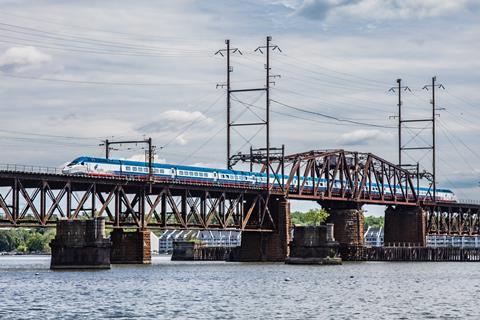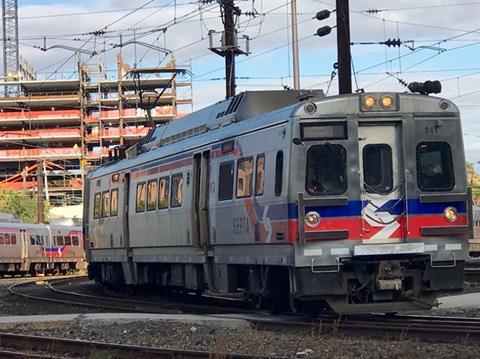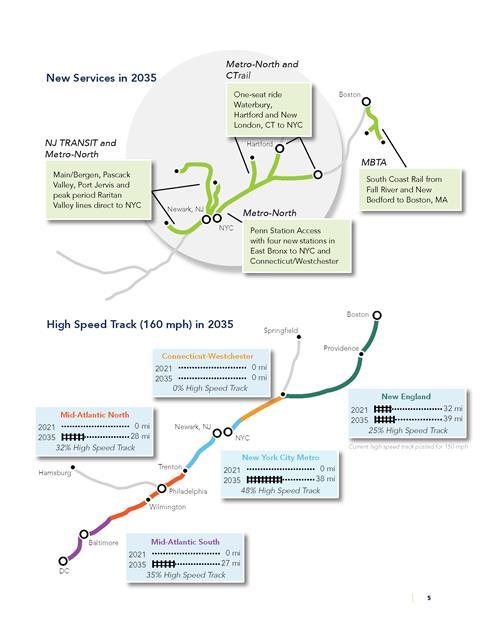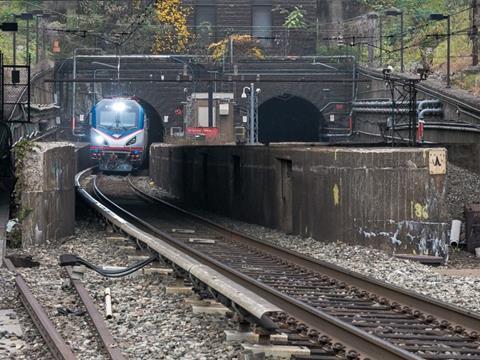
USA: A vision for modernising the 735 km main line linking Washington DC with Boston via Baltimore, Philadelphia and New York was outlined by the Northeast Corridor Commission on July 14.
Costed at an indicative $117bn, the Connect NEC 2035 plan envisages a rolling programme of mostly incremental enhancements to the existing route. Prior to the Covid-19 crisis, the Northeast Corridor had been struggling to handle increasing traffic levels, split between a highly diverse mix of commuter, regional and inter-city passenger services plus some limited freight traffic.

Authorised by Congress in 2008, the NEC Commission brings together 18 organisations, including eight state governments and the District of Columbia, the various commuter rail operators, Amtrak and the federal Department of Transportation. It started work in 2012 on drafting proposals to upgrade the route.
Connect NEC 2035 focuses primarily on infrastructure renewals and capacity enhancement within the existing alignment. Various proposals had been put forward over the past decade, notably by Amtrak, which had argued for construction of significant sections of new line to facilitate high speed operation, as well as new deep-level city centre stations.
These more ambitious aims have largely been deferred in favour of what the commission terms ‘a detailed and efficient sequencing of infrastructure investments covering 150 projects and capital renewal efforts along the corridor’.
Faster Acela, more commuter rail
Among the headline outcomes would be a 26 min acceleration of Amtrak’s premium Acela Express service between Washington and New York, and a 28 min reduction in journey time between New York and Boston. The enhancements would facilitate a 33% increase in Amtrak services and a doubling of commuter rail services within the corridor, including the introduction of more counter-flow and off-peak trains. There would also be some express commuter services, for example between New Haven and New York Penn. Overall, the improvements are forecast to generate an additional 60 million rail journeys per annum from 2035.

The 150 proposed infrastructure interventions are split into five geographical zones — Mid-Atlantic South; Mid-Atlantic North; New York City Metro; Connecticut-Westchester; and New England. Currently, only a 51 km section of the NEC in New England can be considered as ‘high speed’, where Acela services can operate at up to 240 km/h. The 2035 vision would increase this to 212 route-km of 255 km/h operation split across four of the geographical zones.
Major projects encompassed by the plan include the Gateway Programme to build an additional pair of tunnels beneath the Hudson River to link Newark, NJ, with New York, and completion of the renovation and expansion of New York Penn Station.
Much of the rest of the plan covers modest interventions including improvements to improve accessibility at commuter rail stations, power supply and line speed enhancements — notably in New Jersey — and the construction of various overtaking loops and grade-separated junctions, for example to remove conflicts in Philadelphia between SEPTA airport shuttle trains and NEC services.
Towards a high-quality network
‘C35 represents a big step towards the high-quality rail network our nation and this vital region deserve’, commented Amtrak President Stephen Gardner. ‘The investments in infrastructure laid out in this plan will lead to more modern, reliable, and faster trains, expanded service, and a better customer experience that will benefit customers, economies and local communities along the entire Northeast Corridor and beyond. Amtrak stands ready to join forces with our partners and help deliver the C35 plan.’

‘Improving the NEC rail system is a vital multi-state effort’, added Amit Bose, Deputy Administrator of the Federal Railroad Administration and NEC Commission co-chair. ‘C35 is a sequenced plan and a mobilising force that not only puts people back at work renewing the NEC, but also supports new travel patterns as our economy returns to full strength.’
‘The corridor supports more than 800 000 daily passenger trips between the greater Washington D.C. and Boston regions’, said Kevin Corbett, President & CEO of NJ Transit and NEC Commission co-chair. ‘It is imperative that together we seize this once-in-a-generation opportunity to replace aging assets, add rail capacity, improve performance, and enhance the customer experience along the entire corridor.’
The commission’s report suggests that the current funding gap across the federal government and the states affected is around $100bn. ‘To maximise the detailed sequencing laid out in C35 and provide the certainty needed to make long-term investments in workforce development and equipment procurement, multi-year funding needs to be predictable and should fund the plan, rather than individual projects’, the commission explained.
Supporting documents
Click link to download and view these filesNEC Commission C35-Executive-Summary-Only
PDF, Size 3.6 mb

















